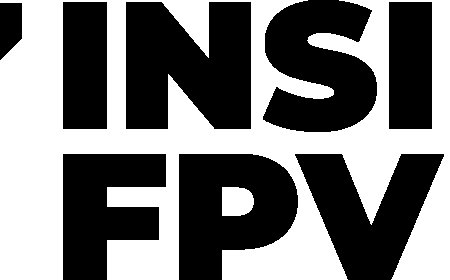How pharma can use real-world data to uncover barriers and deliver patient-centric solutions
Connected healthcare ecosystems are transforming patient care through data-driven insights. Discover how biopharma and AI-driven analytics are closing care gaps and improving outcomes.
There is no doubt that healthcare is full of optimism as development occurs at an unprecedented rate, revolutionizing disease treatment and prevention strategies. One question organizations must ask themselves is whether medical evolution is reaching every patient.

The answer is a connected healthcare ecosystem. It is a cooperative network where stakeholders work together to equip comfortable, justified and patient-focused care. Biotech and pharmaceutical organizations are essential for connected healthcare. They have the potential to manage the complicated issues of the healthcare industry by utilizing the strength of their data. They can identify gaps in care by looking at patient health data from the right angle. With AI-driven analytics and real-world evidence from healthcare consulting, biopharma companies can uncover hidden gaps in care delivery and design targeted interventions that improve patient adherence and outcomes.
Uncovering hidden treatment barriers with patient-centric data
The route from innovation in drug discovery to widespread patient adoption is complex. It is filled with numerous unexpected challenges. However, after assessing these challenges closely, the cause behind them is classified into four categories: -
Clinical limitations: Due to specific surgeries or treatments, some patients may not meet the eligibility criteria.
Provider knowledge gaps: If there is a lack of understanding and awareness about new therapies among healthcare providers, it can delay patient care.
Socio-economic aspects: A major aspect that affects the patient's potential to receive care is the disparity observed in matters of educational qualifications, income levels, and transportation access.
Access and affordability: The complication in insurance coverage and the price of medications can be hindrances for patients who need the required treatment and care.
How data-driven insights reveal solutions
Nowadays, by leveraging the potential of real-world patient care journeys, pharma companies can get a better understanding of the obstacles that hinder patients from getting their treatment or medications. To be in this position, they need to link, purify and examine data from different sources. These may include electronic health records (EHRs), patient surveys and feedback, claims and population health data, digital health tools and wearables.
By using smart data platforms that safely convert the journey of a patient into valuable insights, pharma companies can connect their healthcare data on a bigger scale. Further, if pharma companies have the potential to address the issue, work on support, and boost healthcare results, these platforms help identify opportunities with the use of real-world data. For instance, predictive modeling can flag high-risk patients before they discontinue treatment, enabling proactive support.
Transforming healthcare insights into tangible solutions
After identifying the roadblocks faced by patients, pharma companies can implement targeted approaches to conquer these challenges. Listed below are the key approaches for scalable execution to drive real change: -
- Overcoming clinical limitations: By developing new treatment routines and preparation methodologies appropriate for a large number of patients, pharma companies can invest in Research and Development.
- Tackling social determinants of health (SDOH): Collaborating with community organizations to address non-medical factors that may affect care access, such as transportation support, disease education initiatives and advocacy for equitable health policies.
- Improving healthcare provider knowledge: Developing dynamic, data-driven training programs that equip healthcare providers with the necessary knowledge about the latest treatments. A personalized, omnichannel education, which connects healthcare professionals with key opinion leaders and specialists based on their practice patterns, can help maximize engagement while efficiently scaling outreach across regions, including underserved areas.
- Expanding access and affordability: Innovating pricing structures through income-based models, copay assistance or patient support programs to reduce financial barriers to treatment.
Unlocking Real-World Datas Full Potential
Encourage cross-functional collaboration
Pharmaceutical organizations have historically struggled with operational silos that hinder unified evidence generation. While commercial teams concentrate on understanding the data requirements of external stakeholders, internal departments often work in isolation, sometimes addressing only partial needs. Progressive pharma companies are now overcoming these barriers by establishing interdisciplinary collaboration frameworks for data strategy, evidence alignment and unified external communications. With healthcare consulting, companies must prioritize integrated approaches to evidence development and gain significant competitive advantages in the marketplace.
Building holistic stakeholder relationships that go beyond data
Although life science companies increasingly seek data partnerships with regulatory bodies, healthcare payers and healthcare providers, broader collaborative opportunities remain underdeveloped. A more strategic approach should involve proactive engagement with these critical stakeholders to deeply comprehend their evidentiary expectations. By co-designing robust real-world data studies that meet rigorous standards, organizations can ensure their evidence supports informed therapeutic guidelines and coverage decisions effectively. Such multidimensional partnerships can create greater value than simple data transactions.
Establishing performance metrics to maximize evidence-based outcomes
While the pharmaceutical industry embraced real-world data initiatives, many investments lack proper governance and strategic direction. To refine these efforts, organizations should implement quantitative success metrics that align with corporate goals. Key performance indicators should encompass tangible benefits, such as accelerated development timelines, improved regulatory success rates, enhanced market access and strengthened scientific credibility. These metrics must adhere to SMART principles while enabling an objective assessment of the impact of the program. Additionally, organizations should implement sophisticated tracking systems to monitor evidence requests, active studies and operational resource allocation and measure the demonstrated business value across all functional areas. This disciplined approach ensures evidence generation can deliver measurable results for organizational impact.
Building connected healthcare with real-world data
Pharma companies are essential for shaping the future of connected healthcare. Moreover, by discovering the unseen hurdles in patient journeys, biotech and pharma companies can ensure their pioneering medical advancement reaches those who need them the most, which will consequently help improve outcomes while fostering a sustainable, patient-centric industry model.
The era of medical successes presents a key opportunity for healthcare consulting companies to support the pharma industry in combating obstacles that prevent state-of-the-art treatments from reaching patients when required the most. The organizations that successfully fulfil patient-centered solutions while redefining healthcare for the coming generations
As data becomes one of the most valuable assets for the healthcare industry, forward-thinking pharma companies must leverage real-world data to drive meaningful progress. Beyond simply collecting information, the true competitive advantage lies in creatively applying these insights to advance organizational goals and deliver tangible improvements in patient outcomes.




































![Play99 Login & Registration Guide for Indian Users [2025 Update]](https://www.atlantanewsplus.com/uploads/images/202507/image_140x98_6870c1df7bfcd.jpg)